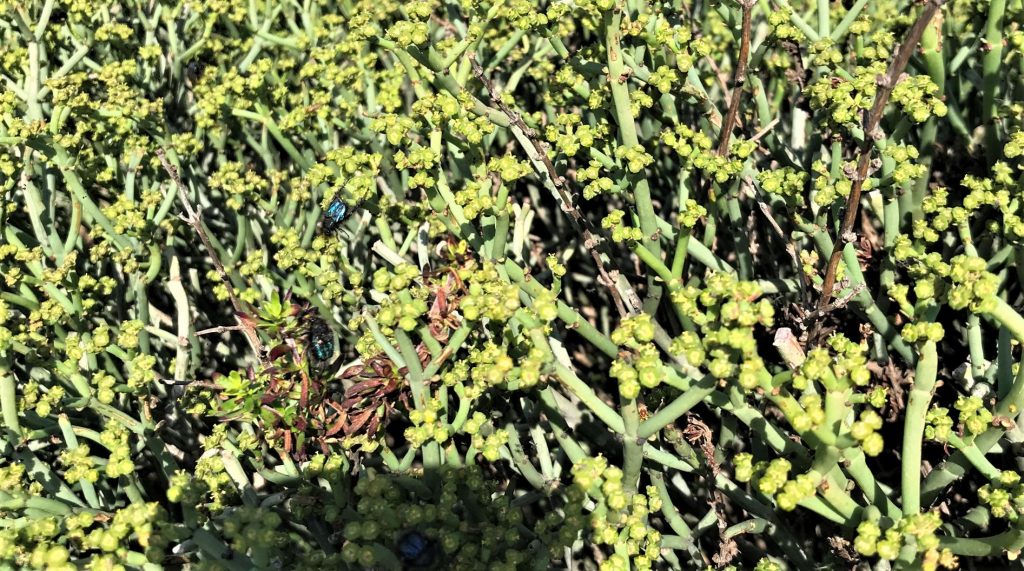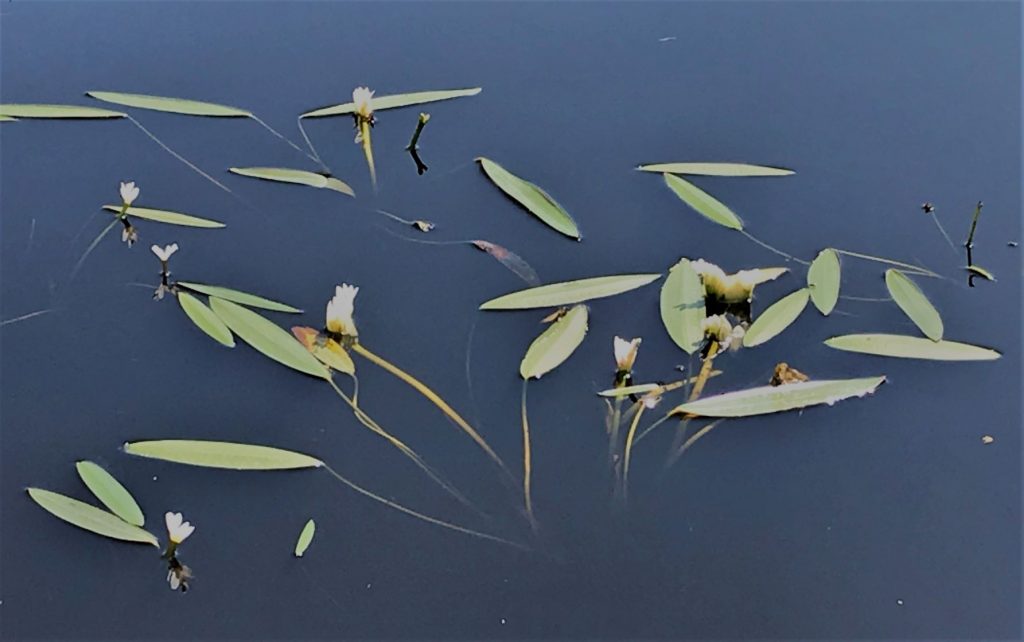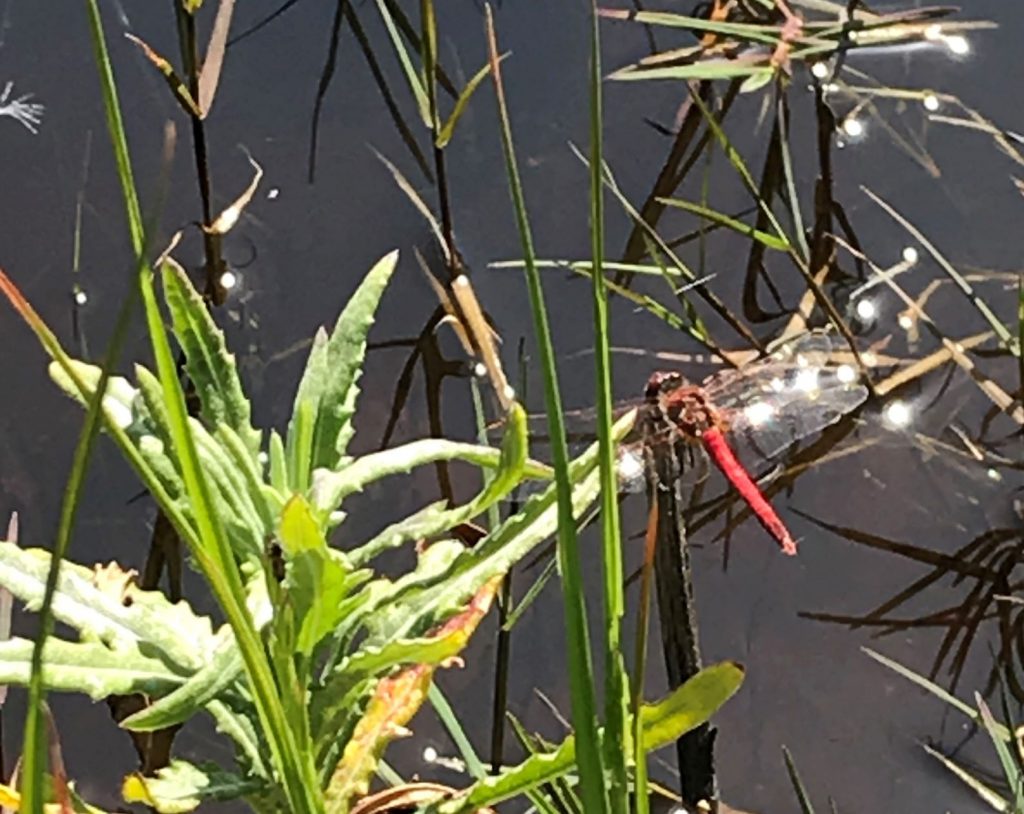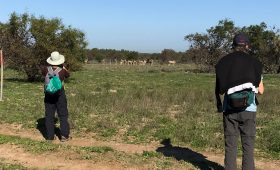Saturday 19 September 2020 was an exceptional Spring morning and I was invited to give a talk to a group of people on top of Blaauwberg Hill about the events of 1806 and WW2.
Taking advantage of the lovely day, and not having to lead a group myself, I decided to take some photographs and check out the beautiful nature that has bloomed all of a sudden. There were numerous birds calling and insect life was abundant. As I was admiring the view of Table Mountain I noticed that one fynbos plant was attracting a lot of interest from pollinating insects. When I inspected this a bit more closely I was amazed to see that these insects were not Bees but Glittering Monkey Beetles! At first I had thought these to be Blow Flies but thanks to Elzette Krynauw (education officer at the reserve) I was put right with the identification. A closer inspection of my picture shows the distinct hairy back legs of the beetle which are common pollinators of plants.

When I reached the bottom of Blaauwberg Hill I popped in to a hidden pan near to the military access road. This pan has been dry for up to five years but this year has now erupted in to life thanks to the good winter rains we have had. Seeing the pan full of water was a beautiful sight and the amount of wildlife was just amazing. At first, I thought it had windblown Port Jackson leaves floating on the surface of the water but then I realised this was Water Lilies.

Looking around the whole of the pan was a picture of life. It then struck me that none of these plants have been here when I have visited the pan previously, well not visibly anyway. The plants have been laying dormant in the dried mud just waiting for the right conditions to come back to life. There were even frogs calling in the perimeter reeds, these have also been laying in the subsurface, cocooned in their protective mucus film keeping them moist until the pan filled to allow them to escape.

The amount of nature that had come to life was fantastic, the whole area was brimming with activity. Skimming over the surface were stunning red Skimmer Dragonflies, feeding on insects and busy looking for mates. The water is vital for their life, providing food and a place to breed.
A totally enjoyable experience in a tiny patch of wilderness in Blaauwberg Nature Reserve.






Looks good Charlie it looks like you really enjoy your work good on you mate